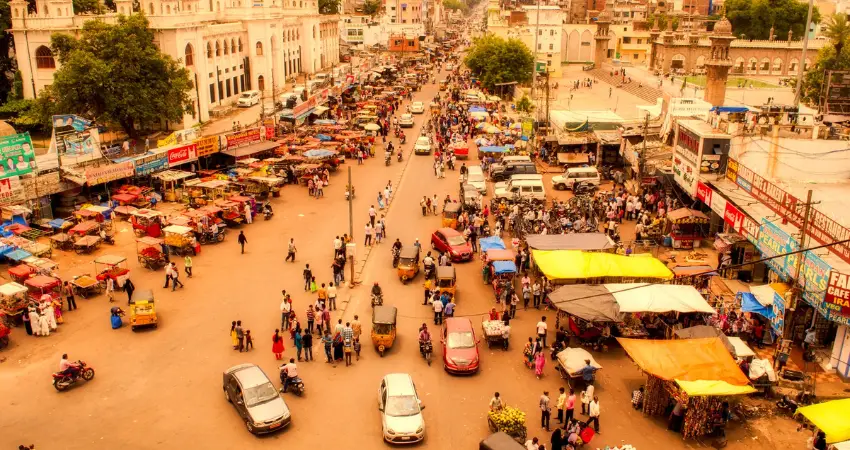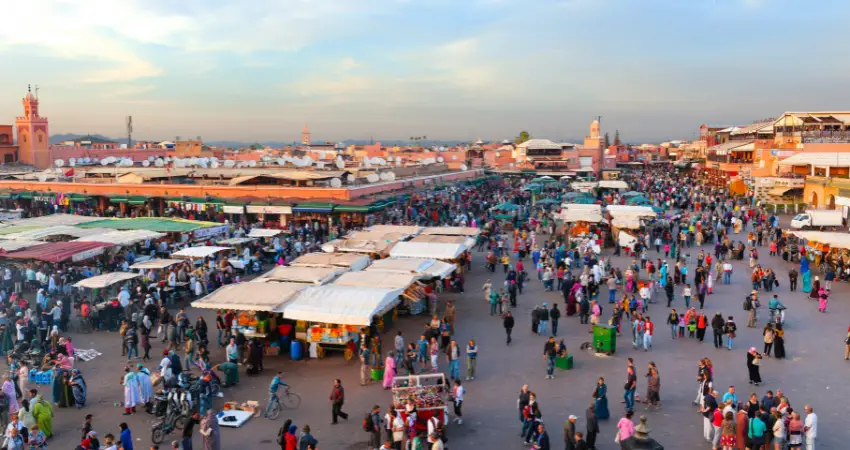India: Heart Disease, Causes, and the Solutions
India is in the midst of a crisis: An epidemic of heart disease. This is a great burden. The main risk factor contributing to the increased in heart disease are lifestyle issues, especially diet. In this article, we will discuss the risk factors of heart disease in the Indian community. We will also address some solutions.
There are 1.3 billion people living in India. They have many different cultures and lifestyles. Therefore, it has been challenging to determine the exact causes of the increase in cardiac disease. Cardiovascular disease is the leading cause of death in India.
India Heart Disease Statistics
According to the World Health Organization, 28% of all deaths in India were related to heart disease. In 1990, 15% of deaths in India were due to heart disease.
Cardiac disease accounted for 14% of disability in India.
- There has been a 6-fold increase in strokes.
- There has been a 9-fold increase in ischemic heart disease.
- There has been a 4-fold increase in rheumatic heart disease.
- There was 6.5 million strokes
- The increases were seen in all age groups.
- The highest proportion of deaths was due to people under the age of 70 years.
- The leading risk factor was dietary risks.
- Other risk factors were high blood pressure, high total cholesterol, air pollution, diabetes, and obesity.

The burden of cardiovascular disease is seen in all states. However, the incidence of ischemic heart disease is seen in a greater rate in the less developed states.
Cardiovascular disease (CVD) is the leading cause of death in India, accounting for 28.1% of all deaths in 2016.
The age-standardized death rate for CVD in India is 282 deaths per 100,000 people, which is higher than the global average of 233 deaths per 100,000 people.
The most common type of heart disease in India is hypertensive heart disease, which is caused by high blood pressure.
Other common types of heart disease in India include coronary heart disease, stroke, and heart failure.
The prevalence of risk factors for heart disease, such as high blood pressure, diabetes, and smoking, is high in India.
The burden of heart disease is expected to increase in India in the coming years due to the aging population and the increasing prevalence of risk factors.
According to Medical News Today, heart disease refers to any problem affecting the heart, such as coronary artery disease, arrhythmia, and heart failure.
Here are some specific statistics on heart disease in different states of India:
- Punjab, Tamil Nadu, and Haryana have the highest burden of ischemic heart disease (IHD).
- Mizoram, Arunachal Pradesh, and Meghalaya have the lowest burden of IHD.
- The prevalence of hypertension is highest in the states of Andhra Pradesh, Telangana, and Karnataka.
- The prevalence of diabetes is highest in the states of Punjab, Haryana, and Uttar Pradesh.
- The prevalence of smoking is highest in the states of Mizoram, Nagaland, and Manipur.
- It is important to note that these are just some statistics on heart disease in India. The actual burden of heart disease may vary depending on a number of factors, such as age, sex, socioeconomic status, and access to healthcare.
Stroke Rate In India
The stroke rate in India is higher in women. The most common type of stroke in India is when their is a bleed in the brain.
According to Bannerjee, the common risk factors are hypertension, diabetes, smoking, and high cholesterol. These diseases are are quite prevalent and inadequately controlled. The reason is because of poor public awareness and inadequate infrastructure.
The stroke numbers are alarming because a significant number of Indians have a stroke below the age of 40.

Risk Factors for Stroke in India
Diet
The age of the person is a risk factor that cannot be changed. However, there are some risk factors that can be changed.
Diet is always a big risk factor. we now know that diet is one of the risk factors that can be changed. Many people in India are vegan or vegetarian. These diets include a high amount of carbohydrates including grains and rice. These carbohydrates cause inflammation in the body. Especially for people who are already prone genetically for heart disease.
Curcumin is an anti-inflammatory herb. Curcumin is a staple food in the Indian community. However, it cannot overpower a bad diet.
The diet that has been studied to help heart disease is the low carb/keto diet. Click here to find a list of low carb foods.
Rice, Naan bread, and other grains contribute to heart disease.
Smoking
Smoking is another risk factor that can be changed.
According to Smoke-Free World:
- Approximately 130 million people ages 15 and older currently smoke.
- Roughly half of all adults are exposed to second-hand smoke at home.
- About 12 percent of the world’s smokers live in India, making it the country with the second most number of smokers in the world (behind China).
- Up to 60 percent of total cancers among males in India are tobacco-related.
These statistics are devastating. Smoking is a major risk factor for stroke because tobacco causes plaque build up in the arteries.
According to the Centers for Disease Control, smoking causes harmful changes to the cells of the blood vessels. These changes can make the vessels be prone to plaque and blood clots.
Smoking also increases the bad cholesterol in the body. India has taken steps to decrease the amount of people who smoke in India.
India passed the Cigarettes and Other Tobacco Products Act which prohibits tobacco advertisements in mass media such as on television and the radio. Smoking is also banned in all public places except designated smoking places in hotels and restaurants.
The ban does not include e-cigarettes, but it does regulate smokeless tobacco and Gutka.
Smoking is part of India’s culture. Therefore, there is not a lot of interest in discussing the dangers of cigarette smoking.
High Blood Pressure in India
Twenty percent of adults in India have high blood pressure. This is a sobering statistic. In fact, high blood pressure is the biggest risk factor for heart disease.
Eighty million people in India have high blood pressure. High blood pressure is the leading cause of death . In addition, people with high blood pressure are at risk for:
- Kidney failure
- Blindness
- Heart failure
- Strokes
- Atrial fibrillation
- Memory loss and other disabling conditions
Dr.Gupta, who is a scientist at the India Institute of Medical Sciences, states that “High blood pressure affects Indians at a younger age than Western populations. Heart attacks and strokes also occur a decade earlier in Indians compared to the Western population”.
In one study, the risk factor most strongly related to high blood pressure in Indians was diabetes. This goes back to the importance of diet. The vegan or vegetarian diet is high in grains such as rice and breads.
The low carb diet has been proven to reduce all risk factors of heart disease. Dr.Gupta goes on to say high blood pressure screening should be done at at the age of 18 to 19 years of age.
Some solutions to the problems of high blood pressure are:
- Educate children early to be physically active
- Maintain a normal weight
- Decrease the grains in the diet
- Avoid smoking
- Eat more garlic and curcumin
Diabetes in India
According to WHO, over 98 million people may have diabetes in India. India has the highest amounts of diabetes of any country in the world. This is directly related to a diet high in carbohydrates.
Diabetes are affecting Indians at an early age. When you contract diabetes at an early age, you tend to have more complications because the disease has had many years to affect your organs.
Diabetes will affect every organ in your body. From the brain to your extremities. This is about the high amount of sugar in your veins and arteries cause the blood to become “sluggish” and the blood cannot adequately circulate in the organs.
Diabetes occurs when the pancreas for some reason does not produce adequate insulin amounts. There are two types of diabetes: Type 1 and Type 2.
Kerala has the largest number of diabetics.
Although people with Type 1 diabetes have to take insulin, they can certainly decrease their insulin dosage with a low carb or keto diet.
I have known Type 2 diabetics who have stop taking their diabetic medication because they went on a low carb diet. Grains such as rice and bread turn into sugar in the body.
People In India Have Some Decisions To Make
If you have finished reading this article, you are now aware that there are some troubling health statistics that are affecting the people of India. Young Indians are attracting diseases that are known to affect the elderly.
The diet of Indians are partially to blame. Years ago, we were taught that a diet high in carbs and plant oils was the way to prevent heart disease.
THEY WERE WRONG !!!
A diet high in carbohydrates turns into sugar in the body and causes all kinds of havoc including inflammation. Dr . Fung, authored of The Obesity Code and an expert on kidney disease, diabetes and weight loss, stated “Diabetes is a dietary disease caused by our body’s insulin response to chronic over consumption of carbohydrates,” he says. “The best and most natural way to reverse the disease is to reduce the consumption of carbohydrates.”
The solution to all of these health disorders is to decrease your insulin levels. The way to do this is to decrease your carbohydrate intake.
References:
The State of Smoking In India
My name is Phyllis Robinson MSN, RN. I have been a Registered Nurse for 27 years in the Cardiac Intensive Care Unit. I am passionate about cardiac care and heart disease. I also want this blog to be an educational tool that people can refer to for traditional and alternative treatment. I will blog on heart disorders such as high blood pressure, congestive heart failure, cardiomyopathy, and high cholesterol.
I received my Nursing degree from Baltimore Community College.
I went on to receive my Masters in Nursing from Walden University
I have worked for almost 30 years in Critical Care with a focus on heart health. I am an advocate of preventive healthcare.

